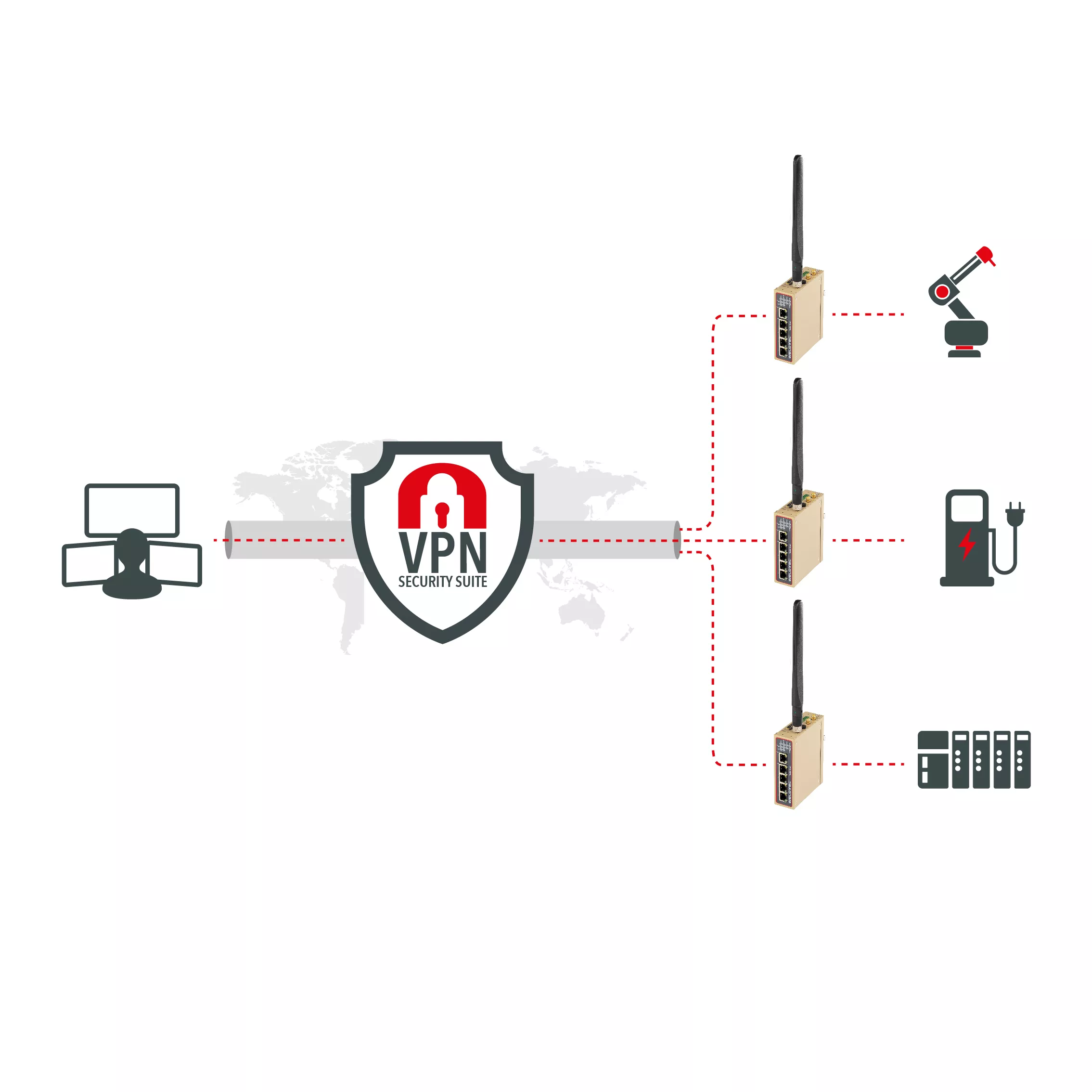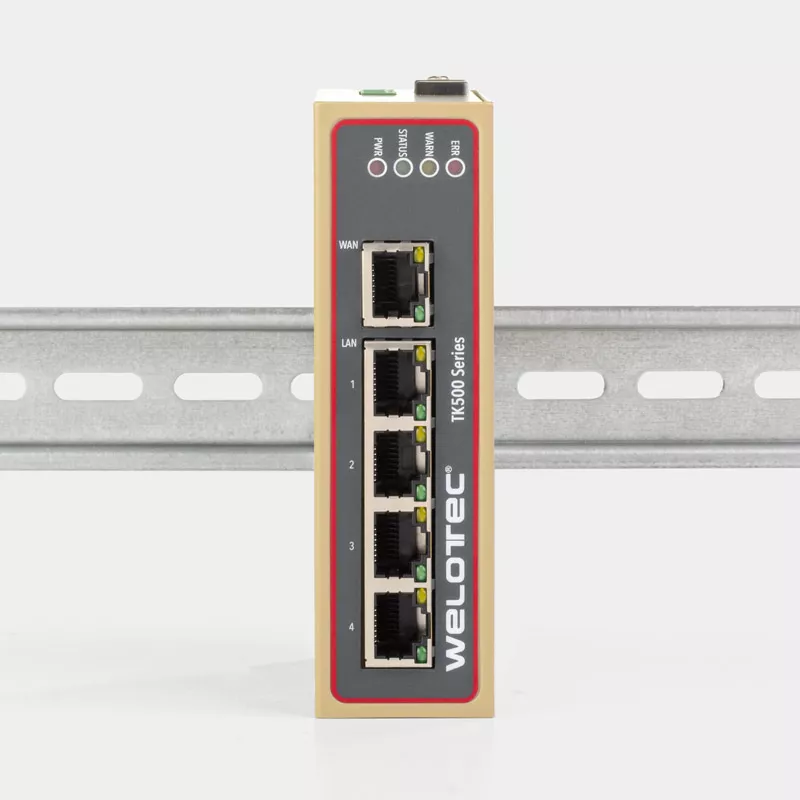Rugged 24V DC DIN-Rail-mounted router
How to choose the right industrial router #part1
Industrial routers must prove themselves in the most diverse applications and under different conditions. The ruggedness and reliability of industrial routers are of particular importance. Additionally other decisive factors are for example the power supply and the mounting. Mostly you can find DIN-Rail industrial routers. By selecting the router, you should also consider a few criteria to find the most suitaible industrial router for your application.
Criterion #01: Environmental conditions
Industrial routers are often installed in harsh and difficult environments. They must be particularly robust, compact and designed for industrial use.
- Temperature
The locations are mostly not heated or air-conditioned. Often, they must withstand extreme temperatures from -25 or even -40°C to +70 or +85°C and large temperature fluctuations.
- Ingress protection
Routers, used in industries, should have IP20 or IP30 to prevent the use and functions from dust and other foreign bodies. If you require a waterproof industrial router, focus on IP54 to IP69k.
- EMC levels
Depending on the device and the industry, the requirements for the limit values are very strict. The standards specify the respective limit values. You can find a summary of the norms in the EMC. These include industry standards such as EN 50155, IEC 61850-3 and IEEE 1613.
- Vibrations
Use special M12 connectors for Ethernet and SMA, TNC or N antenna connectors for WiFi, 4G LTE and 5G.
Criterion #2: Form factor, housing, DIN-Rail and mounting
In most cases, industrial routers are DIN-Rail mounted.
Often you can found industrial routers in control cabinet with limidet space. Due to this a a very compact design is necessary. To protect the router board from electromagnetic interference and the router from external shocks, the housing should be made of robust metal. To avoid corrosion, you should choose aluminium. There are specific requirements for mounting industrial routers. The most common are 4G LTE DIN-Rail routers. Standard DIN-Rail mounting for control cabinets is the right choice for many applications. Otherwise in applications with a lot of vibrations, such as vehicles or machines, wall mounting with screws is the most reliable. Thanks to its compact housing and the DIN-Rail mounting, the Welotec LTE WiFi Industrial Router TK500, for example, is particularly easy to integrate into control cabinets with limited space.

Criterion #3: Industry specific compliance
Depending on the industry, you require different conformities for industrial routers. For example EN 50155 and EN 50121-3-2 for railways, IEC 61850-3, and IEEE 1613 for substations or ECE R10 for the automotive sector. There are also different requirements for resistance and robustness against vibrations, temperature fluctuations, IP protection classes and many more. Ultimately, the industrial routers should be designed to meet the relevant standards because subsequent certification is often not possible.
Criterion #4: Power Supply
24V industrial routers are the most frequently used in practice!
Finally industrial routers should generally support a DC power supply because you can use them for example in control cabinets, substations and vehicles. Depending on the application, a power supply in the range of 12 V DC to 48 V DC can be useful. The Welotec LTE Industrial Router TK800, for example, has a 12 – 48 V DC input for maximum power supply flexibility.
You would like to receive detailed information? Download the whitepaper now! Be curious – we will publish more information on “how to choose the right industrial router” on the blog in the coming weeks.





